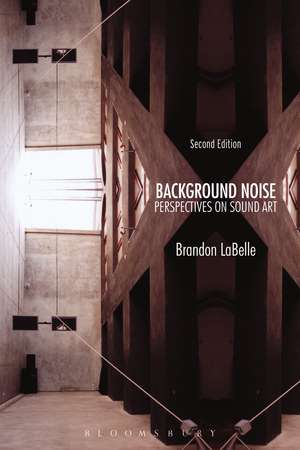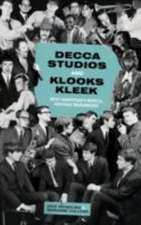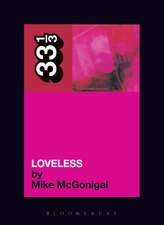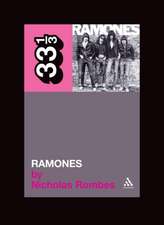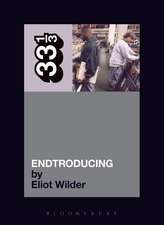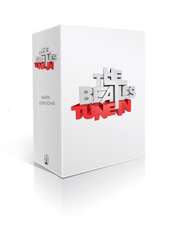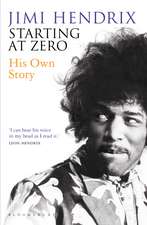Background Noise, Second Edition: Perspectives on Sound Art
Autor Brandon LaBelleen Limba Engleză Paperback – 25 mar 2015
Preț: 228.71 lei
Preț vechi: 260.73 lei
-12% Nou
Puncte Express: 343
Preț estimativ în valută:
43.77€ • 46.80$ • 36.49£
43.77€ • 46.80$ • 36.49£
Carte disponibilă
Livrare economică 27 martie-10 aprilie
Livrare express 13-19 martie pentru 72.16 lei
Preluare comenzi: 021 569.72.76
Specificații
ISBN-13: 9781628923520
ISBN-10: 1628923520
Pagini: 376
Ilustrații: 30 bw images
Dimensiuni: 152 x 229 x 25 mm
Greutate: 0.57 kg
Ediția:Revised
Editura: Bloomsbury Publishing
Colecția Bloomsbury Academic
Locul publicării:New York, United States
ISBN-10: 1628923520
Pagini: 376
Ilustrații: 30 bw images
Dimensiuni: 152 x 229 x 25 mm
Greutate: 0.57 kg
Ediția:Revised
Editura: Bloomsbury Publishing
Colecția Bloomsbury Academic
Locul publicării:New York, United States
Caracteristici
The second edition includes a new preface by the author
Notă biografică
Brandon LaBelle is an artist and writer working with sound culture and locational identities. His previous book, Background Noise: Perspectives on Sound Art, was published in 2006 by Bloomsbury Academic. He is the editor of Errant Bodies Press and organizer of the related Surface Tension project. He is currently Professor at the National Academy of the Arts in Bergen, Norway.
Cuprins
AcknowledgementsPreface to the Second EditionIntroduction: Auditory Relations Fade InPart 1: 4'33": Sound and Points of OriginIntroduction to Part 1 Chapter 1 Sociality of Sound: John Cage and Musical ConceptsChapter 2 Exposing the Sound Object:Musique Concrète's Sonic Research Chapter 3 Automatic Music: Group Ongaku's Performative Labors Part 2: Box with the Sound of Its Own Making: From Gags to Sculptural Form Introduction to Part 2 Chapter 4 Rhythms of Chaos: Happenings, Environments, and Fluxus Chapter 5 Minimalist Treatments: La Monte Young and Robert Morris Chapter 6 Conceptualizations:Michael Asher and the Subject of Space Part 3: I Am Sitting in a Room: Vocal IntensitiesIntroduction to Part 3 Chapter 7 Performing Desire/ Performing Fear: Vito Acconci and the Power Plays of Voice Chapter 8 Finding Oneself: Alvin Lucier and the Phenomenal VoiceChapter 9 Word of Mouth: Christof Migone's Little ManiasPart 4: Public Supply: Buildings, Constructions, and Locational ListeningIntroduction to Part 4 Chapter 10 Tuning Space:Max Neuhaus and Site-Specific SoundChapter 11 Other Architectures:Michael Brewster, Maryanne Amacher, and Bernhard LeitnerChapter 12 Composing Intensities: Iannis Xenakis's Multimedia Architectures Part 5: Soundmarks: Environments and Aural GeographyIntroduction to Part 5 Chapter 13 Seeking Ursound: Hildegard Westerkamp, Steve Peters, and the Soundscape Chapter 14 Language Games: Yasunao Tone and the Mechanics of Information Chapter 15 Complicating Place: Bill Fontana and Networking the Soundscape Part 6: Global Strings: Interpersonal and Network Space Introduction to Part 6 Chapter 16 Interactions: Achim Wollscheid's Production of the Local Chapter 17 Global Events: Atau Tanaka and Network as Instrument Chapter 18 Live Streams: Apo33 and Multiplying Place Fade Out Conclusion: Auditive Pivot Appendix: Peripheries - subnature, phantom memory, and dirty listeningList of Works Cited Index
Recenzii
The rise of a prominent auditory culture, as seen in the recent plethora of art exhibitions on sound art, in conjunction with academic programs dedicated to "aural culture", sonic art, and auditory issues now emerging, reveals the degree to which sound art is lending definition to the 21st Century. And yet sound art still lacks related literature to compliment, and expand, the realm of practice. Written by The Wire's contributor Brandon Labelle, Background Noise sets out an historical overview, while at the same time shaping that history according to what sound art reveals-the dynamics of art to operate spatially, through media of reproduction and broadcast, and in relation to the intensities of communication and its contextual framework.
Background Noise follows the development of sound as an artistic medium and illustrates how sound is put to use within modes of composition, installation, and performance. While chronological in its structure, Brandon LaBelle's book is informed by spatial thinking - weaving architecture, environments, and the specifics of location into the work of sound, with the aim of formulating an expansive history and understanding of sound art.
Reading Background Noise for the first time introduced me to the world of sound art, to its rich history, its incredible variety of concrete works, its overview of artists working in the field, and its discourses. It taught me how to think about sound in relation to space instead of time. Now, some seven years later, Background Noise is still one of my most important sources. It is a must-read for anyone interested in auditory culture and sound art.
There are stones here. Stones gathered with great shrewdness by Brandon LaBelle from the broad shore of relational artistic practice; each carries the weight of its own historical significance; each is perfectly shaped to deliver its conceptual impact; each is thrown outwards in just the right sequence and with just the right trajectory to set the ripples running, producing patterns that continue to inspire the reader long, long after the momentum of the book has come to rest. Background Noise is the very best of books: as reverberant as the phenomena it so beautifully articulates.
Background Noise follows the development of sound as an artistic medium and illustrates how sound is put to use within modes of composition, installation, and performance. While chronological in its structure, Brandon LaBelle's book is informed by spatial thinking - weaving architecture, environments, and the specifics of location into the work of sound, with the aim of formulating an expansive history and understanding of sound art.
Reading Background Noise for the first time introduced me to the world of sound art, to its rich history, its incredible variety of concrete works, its overview of artists working in the field, and its discourses. It taught me how to think about sound in relation to space instead of time. Now, some seven years later, Background Noise is still one of my most important sources. It is a must-read for anyone interested in auditory culture and sound art.
There are stones here. Stones gathered with great shrewdness by Brandon LaBelle from the broad shore of relational artistic practice; each carries the weight of its own historical significance; each is perfectly shaped to deliver its conceptual impact; each is thrown outwards in just the right sequence and with just the right trajectory to set the ripples running, producing patterns that continue to inspire the reader long, long after the momentum of the book has come to rest. Background Noise is the very best of books: as reverberant as the phenomena it so beautifully articulates.
